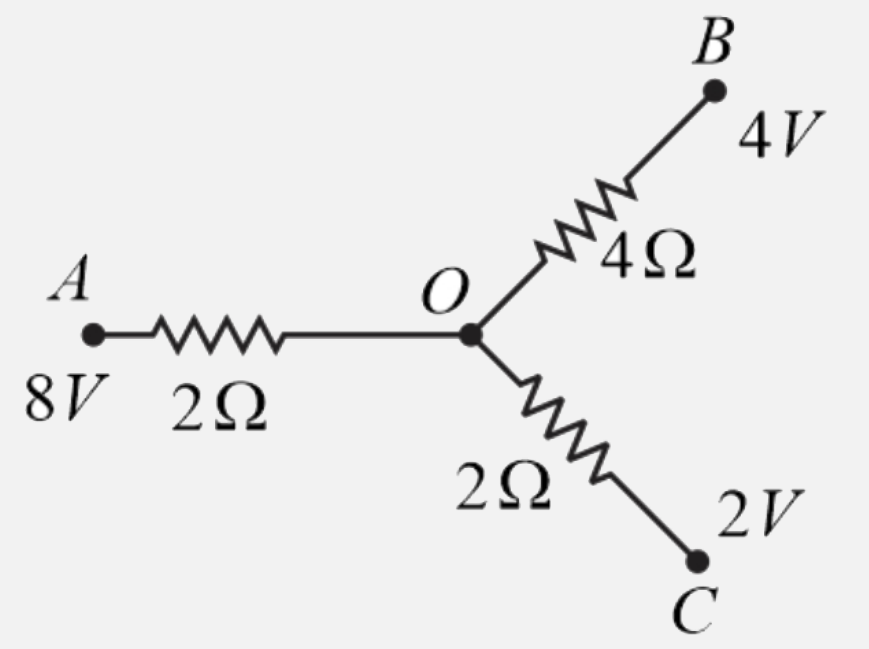Compare the following:
Resting potential and action potential
Step-by-Step Text Solution:
1. Definition of Resting Potential:
- Resting potential refers to the electrical potential difference across a nerve fiber when there is no conduction of a nerve impulse. This is the state of the neuron when it is not actively transmitting signals.
2. Definition of Action Potential:
- Action potential is the electrical potential difference across a nerve fiber during the conduction of a nerve impulse. This occurs when the neuron is actively transmitting a signal.
3. Permeability of Membrane:
- In resting potential, the plasma membrane is more permeable to potassium ions (K+) compared to sodium ions (Na+). This means that potassium ions can move more freely across the membrane.
- In action potential, the plasma membrane becomes more permeable to sodium ions (Na+) than to potassium ions (K+). This change in permeability is crucial for the initiation and propagation of the action potential.
4. Charge Distribution:
- During resting potential, the inside of the membrane is negatively charged relative to the outside. This is due to the higher concentration of negatively charged proteins and the movement of potassium ions out of the cell.
- During action potential, the inside of the membrane becomes positively charged relative to the outside. This occurs because sodium ions rush into the neuron, reversing the charge across the membrane.
5. Summary of Differences:
- Resting Potential: No conduction of impulse, more permeable to K+, negatively charged inside.
- Action Potential: Conduction of impulse, more permeable to Na+, positively charged inside.
- Resting potential refers to the electrical potential difference across a nerve fiber when there is no conduction of a nerve impulse. This is the state of the neuron when it is not actively transmitting signals.
- Action potential is the electrical potential difference across a nerve fiber during the conduction of a nerve impulse. This occurs when the neuron is actively transmitting a signal.
- In resting potential, the plasma membrane is more permeable to potassium ions (K+) compared to sodium ions (Na+). This means that potassium ions can move more freely across the membrane.
- In action potential, the plasma membrane becomes more permeable to sodium ions (Na+) than to potassium ions (K+). This change in permeability is crucial for the initiation and propagation of the action potential.
- During resting potential, the inside of the membrane is negatively charged relative to the outside. This is due to the higher concentration of negatively charged proteins and the movement of potassium ions out of the cell.
- During action potential, the inside of the membrane becomes positively charged relative to the outside. This occurs because sodium ions rush into the neuron, reversing the charge across the membrane.
- Resting Potential: No conduction of impulse, more permeable to K+, negatively charged inside.
- Action Potential: Conduction of impulse, more permeable to Na+, positively charged inside.
Topper's Solved these Questions
- BOOK - ICSECHAPTER - NEURAL CONTROL AND CO-ORDINATION EXERCISE - NCERT EXERCISES WITH ANSWER (DIFFERENTIATE BETWEEN)11videos
NEURAL CONTROL AND CO-ORDINATION
- BOOK - ICSECHAPTER - NEURAL CONTROL AND CO-ORDINATION EXERCISE - TEST YOUR PROGRESS ( HIGHER ORDER THNKING SKILLS QUESTIONS QUESTIONS (HOTS) )8videos
NEURAL CONTROL AND CO-ORDINATION
- BOOK - ICSECHAPTER - MORPHOLOGY OF FLOWERING PLANTS EXERCISE - NCERT TEXTBOOK QUESTIONS WITH SOLUTIONS25videos
MORPHOLOGY OF FLOWERING PLANTS
- BOOK - ICSECHAPTER - NEURAL CONTROL AND COORDINATIONEXERCISE - (Review question) long answer20videos
NEURAL CONTROL AND COORDINATION
Similar Questions
Osmotic potential and Matric potential
View SolutionDistinguish between the following pairs :
Resting potential state and action potential state.View SolutionResting membrane potential and Action potential
View SolutionAction potential is
View SolutionWater potential and solute potential
View SolutionDescribe the following:
(i) Oxidation potential
(ii) Reduction potential
(iii) Normal hydrogen electrodeView SolutionWhat is a resting potential ?
View SolutionDefine water potential and solute potential.
View SolutionIn the following network, the potential at O is
 View Solution
View Solutionin the following network, the potential at O is
 View Solution
View Solution
